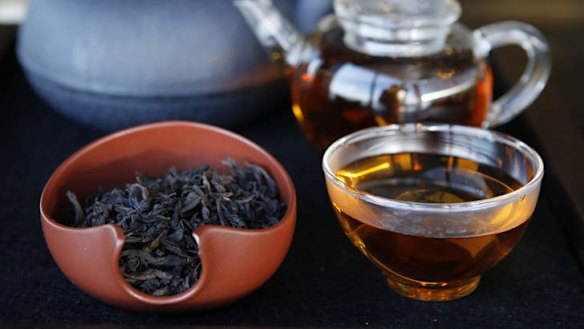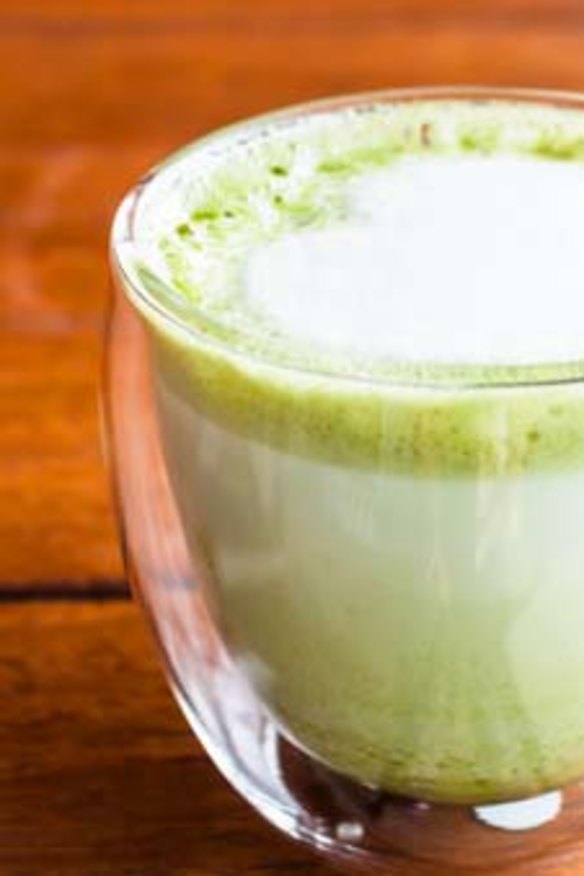Is there such a thing as a tea latte?

Is there such a thing as a tea latte? I can't drink coffee but object to paying the same price for a teabag and hot water. H. Macnamara
The basis of a tea latte is basically half strong tea to half hot milk. The beauty of having a lot of milk is that the tannin in the tea, which normally latches onto the skin in your mouth creating that dry sensation, hooks up with the protein in the milk. This means you can have really strong tea flavour without the mouth-wrenching sharpness from the tannin. The chai latte is a good example of this as when made with real tea and spices the tea is over extracted with loads of tannin being drawn into the liquid. Green tea lattes are now being served by Starbucks in Australia and Earl Grey lattes in Starbucks US. That said, may I suggest you look out for cafes that specialise in teas from China as there you'll find a range of aromatic and rather elegant teas such as the green and slightly savoury dragonwell tea and the invigorating deep red pu-erh tea.
I am baking my first Christmas cake. Do you have any tips for a beginner? K. Elliot

Sorry, no. I am a pudding man. So instead we are going to paraphrase the late, great Dorothy Floate's Secret of Success. Do not butter the tin but line it with three layers of lightweight paper. Do not use newspaper as the newsprint leaches into the batter. Butter must be cold and firm. Do not use very fresh eggs. You don't have to use brandy or other spirits, you can use the juice from stewed fruit such as apple or rhubarb. To quote Mrs Floate, "I am repeatedly asked by worried housewives and many young girls ... why their fruit cakes go down in the centre." This is caused by the evil of overbeating the butter and sugar as the extra air trapped in the batter expands and rises. Importantly she suggests using the very best ingredients. Although there is no mention of immigrants in her book, I personally recommend buying dried fruit and nuts from busy Middle Eastern grocers who have a high turnover of stock or buy from fruit growers at farmers markets.
Why do artichokes make food taste funny? S. Collins
It's spring which means broad beans, asparagus and artichokes are in season. Artichokes have the botanic name Cynara scolymus (Cynara is pronounced like Julia Gillard saying goodbye in Japanese). Artichokes are packed with compounds called phenolics, all good for you, but can taste astringent. One phenolic is called cynarin and is very good at inhibiting the tastebuds that detect sweetness. So when you eat something else, and wash off the cynarin, suddenly everything tastes super sweet.
Can I freeze tofu? S. Gordon
Go for it. It makes it even better at soaking up the flavours of the sauce or stock around it. When you freeze tofu, the water, which is dispersed through the protein sponge, forms pockets of ice. When defrosted, the water flows out leaving a more concentrated sponge. Defrost tofu on a layer of absorbent cloth.
Letters
A few weeks back we suggested using an eye dropper to start emulsifying oil into egg yolk for mayo. M. Artis replied with, "Good grief! Living in the 21st century, why would anyone use a 19th-century method to make mayonnaise? For more than 45 years I've made it in a blender at first and since a food processor, and I don't remember any failures… . Eyedropper indeed!" M. Bevis, however, wrote, "Thanks for the eyedropper tip. I hand whisk my mayo as I don't like the texture blenders give. I put a pin hole in the top of an olive oil bottle and splash the oil into the egg a little bit at a time." Keep the questions, letters and abuse rolling in.
If you have a vexing query email brainfood@richardcornish.com.au
Twitter: @Foodcornish
The best recipes from Australia's leading chefs straight to your inbox.
Sign up